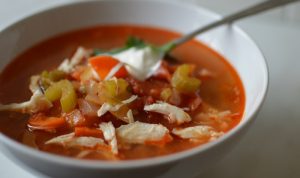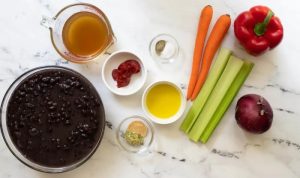Tom Yum Soup: A Culinary Journey: Tom Yum Soup Recipe Using Tom Yum Paste
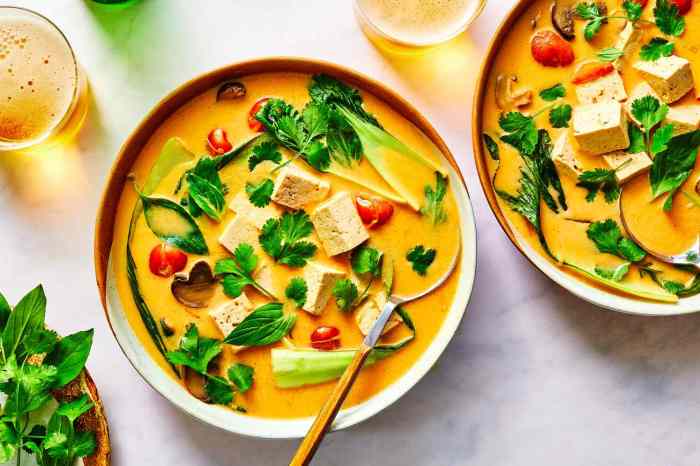
Source: thespruceeats.com
Tom yum soup recipe using tom yum paste – Tom Yum soup, a vibrant and flavorful culinary masterpiece from Thailand, transcends its status as a mere dish; it’s a cultural icon, a testament to the nation’s rich culinary heritage. Its sharp, tangy, and spicy profile has captivated palates worldwide, making it a globally recognized symbol of Thai cuisine. This exploration delves into the heart of Tom Yum soup, from its historical roots and regional variations to mastering its preparation using readily available Tom Yum paste.
Introduction to Tom Yum Soup
Tom Yum’s origins are steeped in Thai culinary tradition, evolving over centuries to become the beloved dish we know today. Its cultural significance extends beyond mere sustenance; it’s often served during celebrations and special occasions, reflecting its place in Thai social fabric. Authentic Tom Yum is defined by its harmonious balance of sour, spicy, salty, and sweet flavors, achieved through a precise blend of ingredients.
Regional variations exist, with differences in spiciness, sourness, and the inclusion of specific herbs and ingredients, reflecting the diverse culinary landscape of Thailand. For example, Tom Yum Goong (shrimp) is incredibly popular, while Tom Yum Gai (chicken) offers a milder alternative.
Understanding Tom Yum Paste, Tom yum soup recipe using tom yum paste
Commercially available Tom Yum paste is a convenient shortcut to achieving the authentic Tom Yum flavor profile. The typical ingredients include lemongrass, galangal, kaffir lime leaves, chilies, and shrimp paste (or a vegetarian alternative). Different brands offer varying flavor profiles, some emphasizing spiciness, others focusing on a more balanced taste. The choice of paste significantly impacts the final flavor of the soup; a high-quality paste provides a more complex and nuanced taste compared to cheaper alternatives.
The paste acts as a foundational flavor base, providing the essential sour, spicy, and savory notes that characterize Tom Yum.
Recipe Variations using Tom Yum Paste
Tom Yum’s versatility shines through its adaptability to various proteins and dietary preferences. Below are three distinct recipes showcasing this adaptability, followed by a vegetarian/vegan option.
| Ingredient | Quantity | Unit | Notes |
|---|---|---|---|
| Tom Yum Paste | 2-3 tbsp | tbsp | Adjust to desired spiciness |
| Recipe 1: Tom Yum Goong (Shrimp) | |||
| Shrimp | 200g | g | Peeled and deveined |
| Chicken Broth | 4 cups | cups | Or vegetable broth for a lighter flavor |
| Lime Juice | 2 tbsp | tbsp | Freshly squeezed is best |
| Fish Sauce | 1 tbsp | tbsp | To taste |
| Sugar | 1 tsp | tsp | To balance the sourness |
| Kaffir Lime Leaves | 2-3 | leaves | Torn into pieces |
| Lemongrass | 1 stalk | stalk | Bruised |
| Cilantro | 1/4 cup | cup | Chopped |
| Recipe 2: Tom Yum Gai (Chicken) | |||
| Chicken Breast | 200g | g | Cubed |
| Chicken Broth | 4 cups | cups | |
| Lime Juice | 2 tbsp | tbsp | |
| Fish Sauce | 1 tbsp | tbsp | |
| Sugar | 1 tsp | tsp | |
| Kaffir Lime Leaves | 2-3 | leaves | |
| Lemongrass | 1 stalk | stalk | |
| Cilantro | 1/4 cup | cup | |
| Recipe 3: Tom Yum Tofu | |||
| Firm Tofu | 200g | g | Pressed and cubed |
| Vegetable Broth | 4 cups | cups | |
| Lime Juice | 2 tbsp | tbsp | |
| Soy Sauce | 1 tbsp | tbsp | Instead of fish sauce |
| Sugar | 1 tsp | tsp | |
| Kaffir Lime Leaves | 2-3 | leaves | |
| Lemongrass | 1 stalk | stalk | |
| Cilantro | 1/4 cup | cup | |
| Vegetarian/Vegan Option: Mushroom Tom Yum | |||
| Assorted Mushrooms | 200g | g | Sliced |
| Vegetable Broth | 4 cups | cups | |
| Lime Juice | 2 tbsp | tbsp | |
| Soy Sauce | 1 tbsp | tbsp | |
| Sugar | 1 tsp | tsp | |
| Kaffir Lime Leaves | 2-3 | leaves | |
| Lemongrass | 1 stalk | stalk | |
| Cilantro | 1/4 cup | cup | |
Cooking Methods and Techniques
The process of making Tom Yum soup involves a straightforward yet nuanced approach. First, sauté the Tom Yum paste in a little oil until fragrant. Then, add the broth, aromatics (lemongrass, kaffir lime leaves), and bring to a boil. Simmer for a few minutes to allow the flavors to meld. Add the protein and cook until done.
Finally, adjust the seasoning by adding lime juice, fish sauce (or soy sauce), and sugar to achieve the desired balance of sour, spicy, salty, and sweet. A common mistake is to add too much of one flavor, throwing off the delicate balance. Patience and careful tasting are key to success.
Serving Suggestions and Garnishes
Tom Yum soup is best served hot and fresh. Suitable garnishes include fresh cilantro, lime wedges, and chili flakes, enhancing both the visual appeal and the taste. The choice of garnish can significantly alter the overall sensory experience; for instance, extra chili flakes add more heat, while lime wedges provide a refreshing burst of acidity.
| Serving Suggestion | Accompaniments | Description |
|---|---|---|
| Main Course | Steamed Rice | Classic pairing to soak up the flavorful broth |
| Side Dish | Spring Rolls | Adds a refreshing contrast in texture and flavor |
| Appetizer | Satay Skewers | Provides a flavorful start to the meal |
Ingredient Substitutions and Adaptations
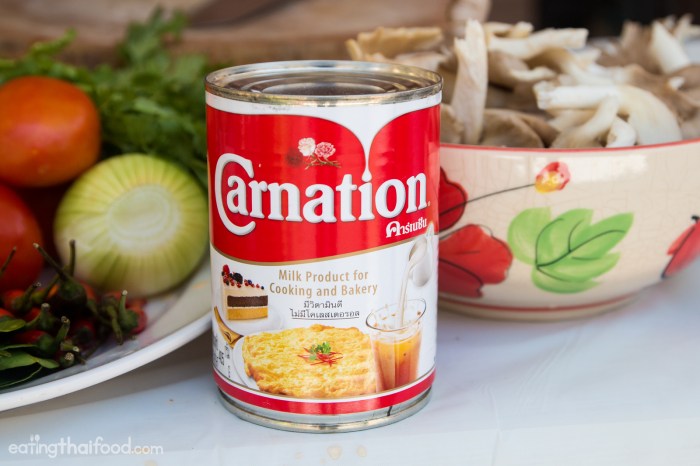
Source: smugmug.com
If Tom Yum paste is unavailable, a combination of lemongrass, galangal, kaffir lime leaves, chilies, and shrimp paste (or a vegetarian substitute) can be used. Dietary restrictions can be accommodated by substituting ingredients accordingly. For example, those with shellfish allergies can use chicken or tofu, and individuals on a low-sodium diet can reduce or omit the fish sauce/soy sauce.
Visual Representation of the Recipe
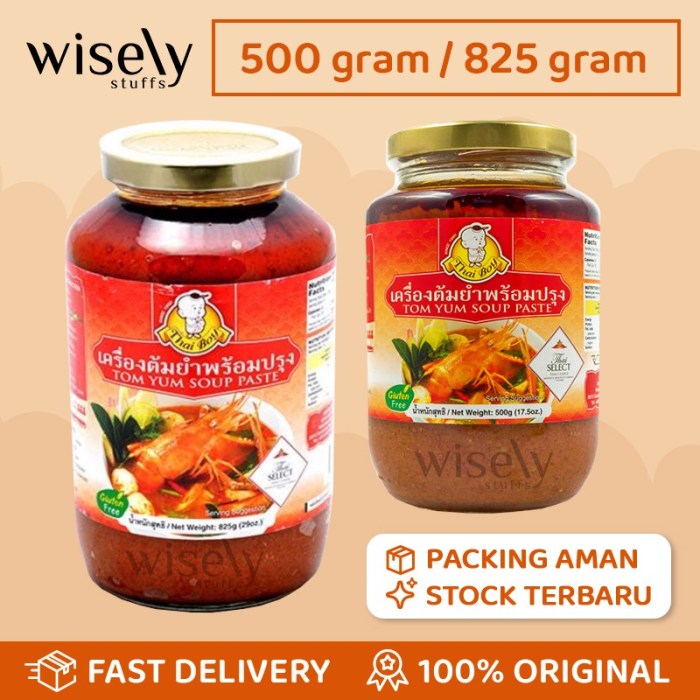
Source: co.id
The finished Tom Yum soup boasts a vibrant, inviting appearance. The broth is typically a clear, slightly golden hue, punctuated by the bright green of cilantro, the pale yellow of lemongrass, and possibly the reddish-orange of chilies. The aroma is intensely fragrant, a heady mix of lemongrass, lime, and spices. The texture is light yet flavorful, with tender protein and aromatic herbs adding complexity.
A perfectly balanced Tom Yum soup is a visual feast, a testament to the artistry of Thai cuisine. The caption for an image would be: “A steaming bowl of Tom Yum soup, its vibrant colors and aromatic steam promising a culinary adventure.”
Mastering a tom yum soup recipe using tom yum paste is all about balance; the right amount of paste dictates the intensity of the signature sour and spicy flavors. For a contrasting yet equally satisfying experience, consider trying a simple borscht soup recipe ; its earthy sweetness offers a delightful change of pace. Returning to the tom yum, remember to adjust the paste according to your spice preference for a perfectly personalized bowl.
Essential Questionnaire
Can I make Tom Yum soup without Tom Yum paste?
Yes, but it requires more effort. You’ll need to individually source and combine the ingredients found in the paste (lemongrass, galangal, chilies, kaffir lime leaves, etc.).
How long can I store leftover Tom Yum soup?
Store leftover soup in an airtight container in the refrigerator for up to 3 days. Reheat gently before serving.
What if my Tom Yum soup is too sour or too spicy?
Too sour? Add a pinch of sugar or a touch more broth to dilute the acidity. Too spicy? Add a dollop of coconut milk or a squeeze of lime juice (surprisingly, it can balance the heat).
What are some alternative protein options?
Mushrooms, firm tofu, seafood (mussels, squid), or even chicken meatballs are excellent choices.




